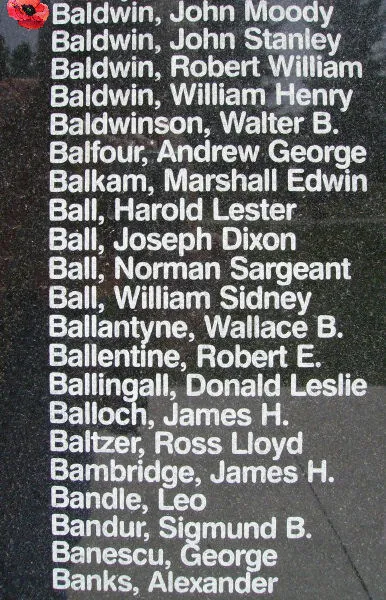Nicholas, Bertram Horace (Sergeant)
Killed in Action 1944-March-25


Birth Date: 1921
Born:
Parents: HORATIO AND BLANCHE NICHOLAS OF DOWLAIS, GLAMORGAN
Spouse: JOY I. NICHOLAS, OF DOWLAIS, GLAMORGAN
Home:
Enlistment:
Enlistment Date: unkown date
Service
RAFVR
Unit
97 (PFF) Sqn- Squadron (RAF)
Achieve Your Aim
Base
RAF Bourn
Rank
Sergeant
Position
Flight Engineer
Service Numbers
1298586
Crew or Other Personnel
Lancaster JB671
Mission
Lancaster Mk.III JB671
Bombing Berlin Germany 1944-March-25 to 1944-March-25
97 (PFF) Sqn (RAF) RAF Bourn
811 aircraft - 577 Lancasters, 2 l 6 Halifaxes, l 8 Mosquitoes. 72 aircraft - 44 Lancasters, 28 Halifaxes - lost, 8·9 per cent of the force.
This night became known in Bomber Command as 'the night of the strong winds', A powerful wind from the north carried the bombers south at every stage of the flight. Not only was this wind not forecast accurately but it was so strong that the various methods available to warn crews of wind changes during the flight failed to detect the full strength of it. The bomber stream became very scattered, particularly m the homeward flight and radar-predicted Flak batteries at many places were able :o score successes. Part of the bomber force even strayed over the Ruhr defences on :he return flight. It is believed that approximately 50 of the 72 aircraft lost were destroyed by Flak; most of the remainder were victims of night fighters. The Berlin report says that 14 bombers were shot down by fighters in the target area.
The strong winds caused difficulties in the marking at Berlin with, unusually, markers being carried beyond the target and well out to the south-west of the city. 126 smnll towns and vlllages outside Berlin recorded bombs und 30 people were killed In those places, The majority of the damage in Berlin was in the south-western districts, As usual, much housing was destroyed and about 20,000 people were bombed out. Approximately 150 people were killed. No industrial concerns were classed as destroyed but several important ones were damaged. 5 military establishments were badly hit including the depot of the Waffen-S.S. Leibstandarte Adolf Hitler Division in Lichterfelde.
This was the last major R.A.F. raid on Berlin during the war, although the city would be bombed many times by small forces of Mosquitoes.source: The Bomber Command War Diaries, Martin Middlebrook and Chris Everitt
.97 Squadron (Achieve Your Aim), Pathfinder Force. Lancaster aircraft JB 671 missing during operations over enemy territory. Six RAF members of the crew, Flight Sergeant W. Chapman, Flight Sergeant S. Nuttall, Pilot Officer W.D. Coates, D.F.M., Sergeant B.H. Nicholas, Sergeant. W.L. York and Sergeant F. Thompson were also killed.
Lancaster serial: JB671

Canadian Warplane Heritage Museum
The Avro Lancaster is a British Second World War heavy bomber. It was designed and manufactured by Avro as a contemporary of the Handley Page Halifax, both bombers having been developed to the same specification, as well as the Short Stirling, all three aircraft being four-engined heavy bombers adopted by the Royal Air Force (RAF) during the same wartime era.
The Lancaster has its origins in the twin-engine Avro Manchester which had been developed during the late 1930s in response to the Air Ministry Specification P.13/36 for a capable medium bomber for "world-wide use". Originally developed as an evolution of the Manchester (which had proved troublesome in service and was retired in 1942), the Lancaster was designed by Roy Chadwick and powered by four Rolls-Royce Merlins and in one version, Bristol Hercules engines. It first saw service with RAF Bomber Command in 1942 and as the strategic bombing offensive over Europe gathered momentum, it was the main aircraft for the night-time bombing campaigns that followed. As increasing numbers of the type were produced, it became the principal heavy bomber used by the RAF, the Royal Canadian Air Force (RCAF) and squadrons from other Commonwealth and European countries serving within the RAF, overshadowing the Halifax and Stirling. Wikipedia

